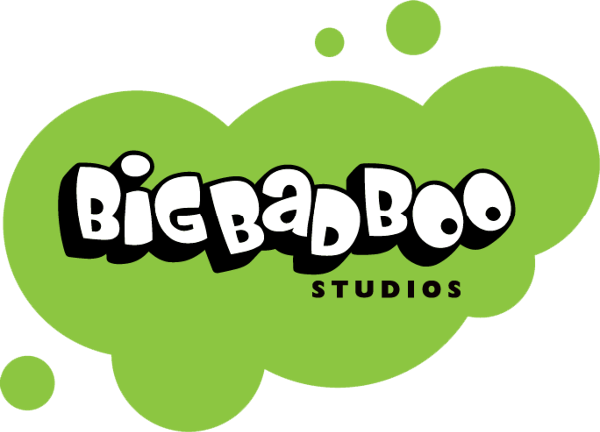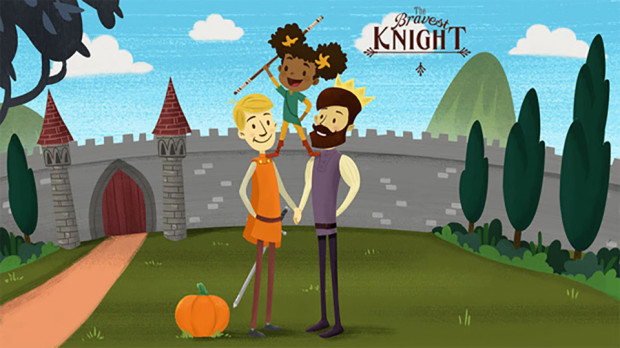In the wake of February’s Parkland, Florida massacre—one of the deadliest school shootings in modern US history—The New York Times published an essay by comedian Michael Ian Black entitled “The Boys Are Not All Right.” The piece explored why it’s almost always men who are opening fire in US schools, suggesting that males remain stuck in a rigid, outdated model of masculinity—one where manliness is measured by strength and power over others, and vulnerability and emasculation go hand in hand. In less than a week, the essay ignited a deeper, global discussion about the culture of toxic masculinity and the unconscious biases that fuel it. While there are conflicting views on the topic, one underlying theme is clear: This conversation begins with the very young.
In today’s male-dominated media landscape, and within the children’s entertainment space particularly, the role that producers, educators and broadcasters have in addressing equal gender representation is vital. According to kids media researcher Dr. Maya Goetz, there is a particular need to address the gender identity of boys and their lack of emotional competencies. “If we look in the preschool to seven-year-old segment, stories traditionally feature men and boys as the heroes. But in actuality, boys in their everyday real lives are surrounded by very powerful women,” says Goetz. “In the classroom, girls can be quieter, better behaved and they often can write and draw better. So boys are actually dealing with a lot of strong, competent girls, but we don’t give them stories to help them deal with this.”
On the emotional front, Goetz adds that it’s very difficult for boys to understand, for example, why they may develop certain emotions within their peer group. “They might have a feeling, but they don’t know what to do with it,” she says. “We have almost no shows that reflect the everyday persona of boys. We have plenty for girls, but none for boys.”
Goetz suggests that male writers, directors and producers need to receive more mentoring on gender so they can learn about what today’s boys are typically going through. “For example, why are boys so thrilled about weapons when they are five and six? Why do they behave in a certain way? How can we help them? What are they missing?,” she asks. “Writers should also reflect on what it means to be a male themselves, and how it influences their own shows.”
Tackling unconscious bias
For Andrew Kavanagh, founder and CEO of Irish studio Kavaleer Productions (Dougie Noir, Kiva Can Do!), creating a more equitable gender balance in kids content is critical for the audience, industry and society as a whole. Kavanagh says he recently became particularly unsettled after watching Jennifer Siebel Newsom’s 2015 documentary The Mask You Live In, which follows a group of boys and young men struggling to stay true to themselves while negotiating a narrow definition of masculinity.
“It delves into repressed boys who develop major issues by the time they hit their teens, all because of social conditioning about how they should express themselves,” Kavanagh says. “In kids content, there’s a lot of unconscious bias that might inadvertently seed notions of a more negative kind of masculinity.” Inspired to do something about it, Kavanagh developed Kavaleer’s latest preschool comedy, Neenawsaurs, to help boys reach the same level of development as girls when it comes to coping with feelings and emotions.
Presented at last year’s Cartoon Forum, the 52 x 11-minute animated preschool series follows a tactical response unit of pint-sized dinosaurs—three female, two male—that are always on hand after toddler tantrums and emotional outbursts to make things right again. “It’s kind of like PAW Patrol for emotions,” says Kavanagh. “The Neenawsaurs exist to make kids feel better and help them talk out whatever is bothering them. It’s gender-neutral, but it’s also a Trojan horse show in that it uses a lot of boy tropes as catnip to attract a mostly male demographic.”
According to Kavanagh, dinosaurs were cast because they are not obviously male or female, and the ambiguity was used to help bring out each character’s personality type. “We’re trying to explore character interrelationships that develop when you have a predominantly female cast in a show that feels very female overtly, but looks like a ‘boys’ show because there’s action and dinosaurs,” he says. To drive the development process, Kavanagh hired veteran kids writer Dave Ingham (Octonauts, Kazoops), whose own family life helped inform the interpersonal feel of the show. “Dave has a wonderful empathetic nature, which comes from raising two boys on his own and being both mother and father to his kids,” says Kavanagh.
Reflecting on the project, Kavanagh says if Neenawsaurs was designed as a more overtly boy-skewing series cast with human characters dealing with feelings and emotions, the production would have experienced problems. “I knew it would be a challenge if I had done the show another way,” he says. “It would be harder to set up and much harder to sell to broadcasters.”
Positive masculinity
While there is much work to be done on the broadcast side when it comes to airing shows that present a different side of masculinity and male sexuality, progress has undoubtedly been made. Nickelodeon hit series The Loud House introduced the kidsnet’s first married gay couple, and US streaming service Hulu recently greenlit The Bravest Knight, a 13 x 11-minute comedy/adventure series from US prodco Big Bad Boo Studios that features an LGBTQ lead character. Based on a book by bestselling author Daniel Errico, The Bravest Knight follows a young pumpkin farmer who becomes a courageous knight and chooses to marry a prince after saving him from a fierce dragon.
“Bravest Knight is a perfect example of breaking stereotypes on the male side,” says Shabnam Rezaei, president and co-founder of Big Bad Boo. “We show that Cedric the Knight and Prince Andrew have a loving relationship, one that has its quirks and funny moments. For example, Prince Andrew can’t cook to save his life, and Cedric always makes fun of him for that. It’s the little everyday things that can balance the traditionally female and male roles into more ‘anybody can be anything’ scenarios.”
Internally, Rezaei says the company is now using the phrase “positive masculinity” in the development of its shows. “We always try to be gender-balanced when we lay out a show, and more recently we’ve been talking about this idea of positive masculinity,” Rezaei says. “We want to demonstrate that a boy can be gentle. Or maybe he’s really caring and wants to put on a princess costume. These are the things that normalize the traits and emotions that every boy can potentially have, but society has traditionally told them to suppress.”
Rezaei adds that the same principles can be applied to portrayals of young girls. “The other side is that maybe girls like to be gross,” she says. “Maybe they fart, and are silly and really funny. Maybe they are angry or disgusting and dirty. Showing these traditionally masculine traits on girls is just as important.”
As for how other writers and producers can deliver more accurate gender-balanced stories, Big Bad Boo has partnered with US civil rights org Human Rights Campaign (HRC), which works to achieve LGBTQ equality. “They read all of our scripts and have loved the storylines so far,” says Rezaei. “We also wanted them as a partner to support us during the launch and airing of Bravest Knight, because they warned that there can be some backlash. The HRC’s strategy is to bombard online haters with love, which brings even more attention to this topic.”
Rezaei says Big Bad Boo is now actively working with HRC on a curriculum for Bravest Knight, which will potentially be used as an online resource for parents and kids. HRC also provides Welcoming Schools, an LGBTQ-inclusive curriculum that addresses family diversity, gender stereotyping and bullying in K-5 schools. Big Bad Boo wants to make the resources available on its website, too. “As producers, we want to provide a safe place where all parents can access information and learn terminology to help them talk to their kids about gender issues,” says Rezaei.
UK-based Kidzilla Media founder Stephanie Wahlstrom says she would welcome any new curricula and resources. “I’m all about getting as much research as possible because it informs the best show,” Wahlstrom says. “Any support and guidelines would help make the unconscious bias conscious, and the transparency would also help broadcasters and those in the commissioning seats. There has been a lot of progress, but the hardest part is actually getting something that is different off the ground. I’m still bumping up against the ‘boys don’t watch girls shows’ position, and I would really like that narrative to end.”
While kids producers work out how best to present inclusive stories and engage with parents, kids themselves are showing that they may think more flexibly about gender identities than we previously thought, according to a new US study of eight- to 10-year olds from researchers at Vanderbilt’s Peabody College of Education and Human Development. After examining children’s reactions to a genderless, human-like android character named PAL from Sinking Ship’s Amazon kids show Annedroids, the researchers found that exposing children to the character and engaging in one-on-one conversations about its gender identity may have the potential to encourage more flexible thinking among those who hold rigid gender stereotypes.
The first-of-its kind study led by doctoral candidate Sara Beck also revealed that the children surveyed were very aware of society’s expectations about behavior based on binary gender identities. And awareness is the first step towards inciting change. “I think kids today are forward-thinking,” says Rezaei. “And they want to be free of the notions that older generations bring with them.”



